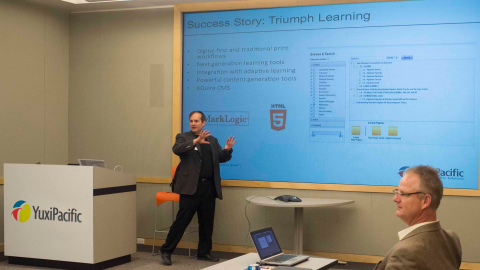How to Use Yahoo s New Stock Tools
Post on: 1 Май, 2015 No Comment

Yahoo’s Powerful New Analysis Tools
Yahoo recently overhauled the way it presents stock data, and in the process has added three powerful new tools that will help you pick better stocks.
Two of them, forward P/E and enterprise value, give you new ways to value stocks. The third, an improved way to find and evaluate your stock’s direct competitors, is easiest to explain, so I’ll start with it.
You can access each feature by getting a price quote on Yahoo’s main stock page (finance.yahoo.com ) and then using the menu on the left to select the required report.
Who’s the Best?
It pays to check out the competition, because one of them might be a better bet than your stock.
Yahoo’s new Competitors report is perfectly suited for that task. It’s better than most sites at pinpointing direct competitors, and it also gives you the info you need to pick the most promising candidate.
For instance when I looked up imported home furnishings retailer Pier 1 Imports, Yahoo correctly nailed Cost Plus World Markets, Bed Bath & Beyond, and Williams-Sonoma as its main competitors.
I’ve mentioned in previous columns that when comparing firms in the same industry, all else equal, those with the most sales, highest sales growth, and the highest operating margins are usually the most promising candidates. Yahoo’s competitor’s report lists all that plus more, in a concise and usable format. In this instance, Bed Bath & Beyond was tops in each category.
A Better P/E
The price/earnings ratio (P/E), which is the latest stock price divided by 12-month’s per share earnings, is the most widely used stock valuation gauge.
Most sites display P/E ratios calculated using TTM (trailing 12-months) reported earnings, but that can be misleading because the TTM earnings are often reduced by one-time or non-recurring charges.
For example, prescription drug maker King Pharmaceuticals posted losses in recent quarters brought on by new product acquisition costs and a variety of other non-recurring charges. As a result, King’s TTM earnings amount to only $0.04 per share, giving it an astronomical 392 P/E, overpriced by just about any standard.
But it isn’t realistic to value King based on its temporarily depressed $0.04 per share earnings when it’s expected to earn $1.53 this year and $1.80 in 2004.
That’s why many investors prefer to value stocks using forward P/E ratios, which are based on forecast earnings instead of the historical figures. Until now, you had to calculate the forward P/E because most sites display only the TTM number. But Yahoo’s new “Key Statistics” report shows the forward P/E calculated using the company’s current fiscal year’s forecast earnings as well as the more familiar TTM (trailing) P/E. For King, Yahoo shows a forward P/E of 9, putting it in the value stock category.
Using forward P/E isn’t ideal. Analyst’s earnings forecasts can be wrong, and their forecasts assume no future non-recurring costs, which may be unrealistic. Nevertheless, King’s future annual earnings are more likely to be closer to $1.53 per share than to $0.04. Despite its shortcomings, in my experience, using forward P/E is the best metric for valuing stocks.
In any case, since Yahoo gives you both TTM and forward P/E, you can take your choice.
Enterprise Value
Yahoo has added a new metric, “Enterprise Value,” which gives you another, and in my view, better way to gauge a company’s valuation. Here’s why.
Although P/E is calculated by dividing stock price by earnings per share, the term is really shorthand for dividing the firm’s market-capitalization by its net income. If you’re rusty on your stock market terms, market-cap is the share price multiplied by the number of outstanding shares, and many think of market-cap as the company’s total value.
But market-capitalization can give a misleading answer. To get a true picture of company’s value, the market-cap has to be adjusted for the company’s cash on hand and debt.

For example, say you were considering taking over a company with 1,000,000 shares outstanding, and those shares were trading at $20 each. So, if market-cap were the whole story, you would have to come up with $20 million ($20 x 1,000,000), to buy the entire company.
But what if the company had $5 million in the bank and no debt. Even though you have to shell out $20 million to buy the shares, you get the $5 million in the bank, thus your net cost, and the company’s real value, is only $15 million.
Now assume the same company had debt totaling $10 million. Your cost goes up to $25 million since you are now on the hook for the $10 million in debt plus the $15 million net cash you’re paying out.
Enterprise value, which is market capitalization minus cash on hand plus total debt, is a better gauge of the firm’s total valuation than market-cap, and the difference can be substantial.
Consider All American Semiconductor. The chip distributor’s market-cap is only $14 million, but because it carries high-debt, its enterprise value is $60 million, more than four times higher. By contrast, game maker Activision has lots of cash and no debt. So its enterprise value is actually 40% lower than its market-cap.
The best valuation ratio using enterprise value (EV) is the EV/EBITDA ratio, where EBITDA is e arnings b efore i nterest, t axes, d epreciation and a mortization.
For example, based on P/E, Activision is more expensive than All American Semi (25 vs. 9), but Activision is actually cheaper than All American using EV/EBITDA (3.6 vs. 18.3).
Yahoo displays market-cap, enterprise value, and EV/EBITDA in its Key Statistics report.
Yahoo deserves a round of applause for not only coming up with new tools to make us better investors, but for making them available to us at no charge.
published 9/7/03 & 9/21/03














